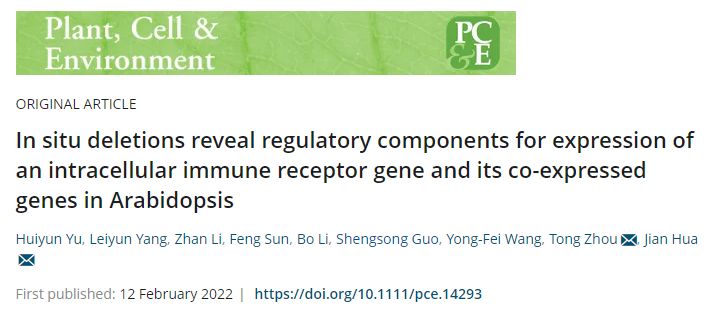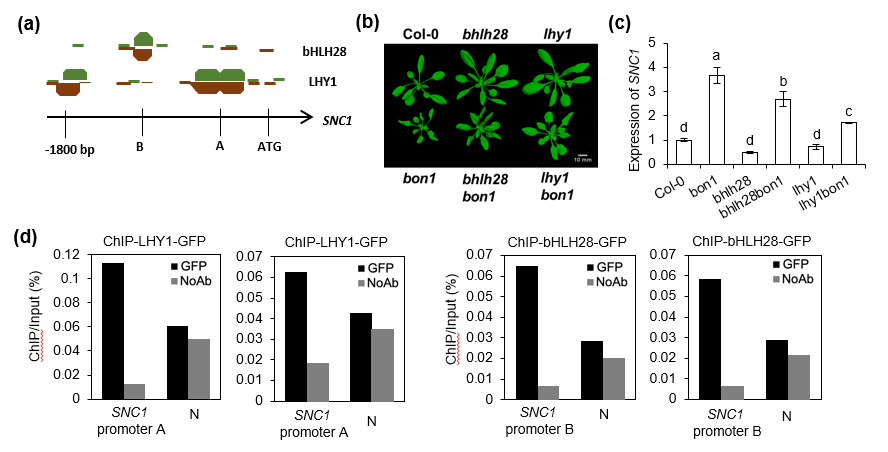Intracellular immune receptor NLRs in plants are highly regulated transcriptionally and post-transcriptionally for balanced plant defense and growth. Despite of intensive studies of regulation of NLR proteins, NLR genes often exist in gene clusters and regulated by large regions of chromatin. Then cis-elements cannot be studied by transgenic method, repression or co-expression is largely unknown.

To identify regulatory cis-acting elements for the expression of SNC1, we generated a series of deletions in the SNC1 locus by the two-target design CRISPR/Cas9 system which are in the regions of 2 kb upstream of the translation initiation site and 4 kb downstream of stop codon. To analyze 10 deletion mutants, we identified multiple positive and negative cis-acting elements.

Figure 1. Diagram of putative cis-acting elements and transcription factors at the SNC1 locus.

Figure 2. Function of LHY1 and bHLH28 in SNC1 expression regulation.
Like C2 and C5 in the upstream region and C9 in the downstream region as potential positive cis-acting elements. C8 in the upstream region and C10 in the downstream region are likely negative cis-acting elements (Fig. 1). Transcription factors LHY1 and bHLH28 that may bind to two positive cis-acting elements were further identified and their functions in the regulation of SNC1 gene expression were verified (Fig. 2). These results provide new clues for the transcriptional regulation of SNC1 in plants.
Recently, Plant, Cell & Environment (Impact Factor 7.228, TOP1 of Chinese Academy of Sciences) published the online research paper "In situ deletions reveal regulatory components for expression of an intracellular immune receptor gene and its co-expressed genes in Arabidopsis ". The Institute of Plant Protection (JAAS) is the first corresponding organization. Dr. Yu Huiyun of JAAS and Cornell University and Dr. Leiyun Yang and Dr. Zhan Li of Cornell University are the co-first authors. Prof. Zhou Tong of JAAS and Prof. Jian Hua of Cornell University are the co-corresponding authors. This study is supported by Natural Science Foundation of China (31761143012), National grants of National Science Foundation of USA (IOS-1946174), and Postdoctoral Research Foundation of Jiangsu Province.
Paper link:https://doi.org/10.1111/pce.14293


